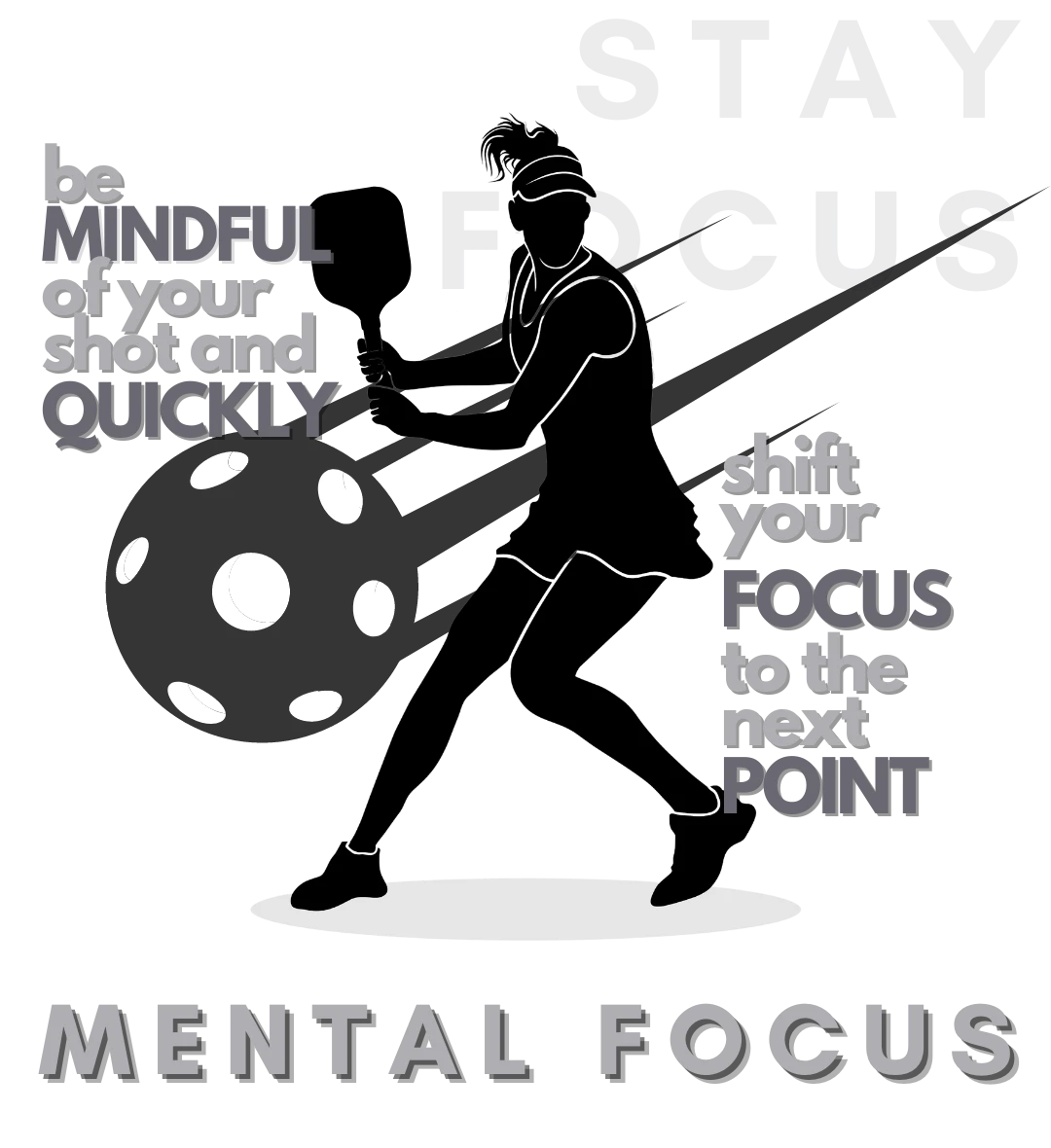
Pickleball Techniques and Strategies: from Beginner to Champion
From Beginner to Pro: Ace your Play with our Pickleball Techniques & Strategies to Dominate the Court in your Next Game.
Hello, fellow Pickleballers! Glad to see you again! If you’re looking to improve your game, try our Pickleball drill blog we’ve prepared for you! So, have you been practicing your game since our last blog about Pickleball rallies? Did our previous tips help you get better? If you’re new to our Pickleball community, don’t worry– because there’s more to explore! Whether you’re a beginner excited to pick up the paddle for the first time or an experienced player looking to take your game to the next level, you’re in the right place.
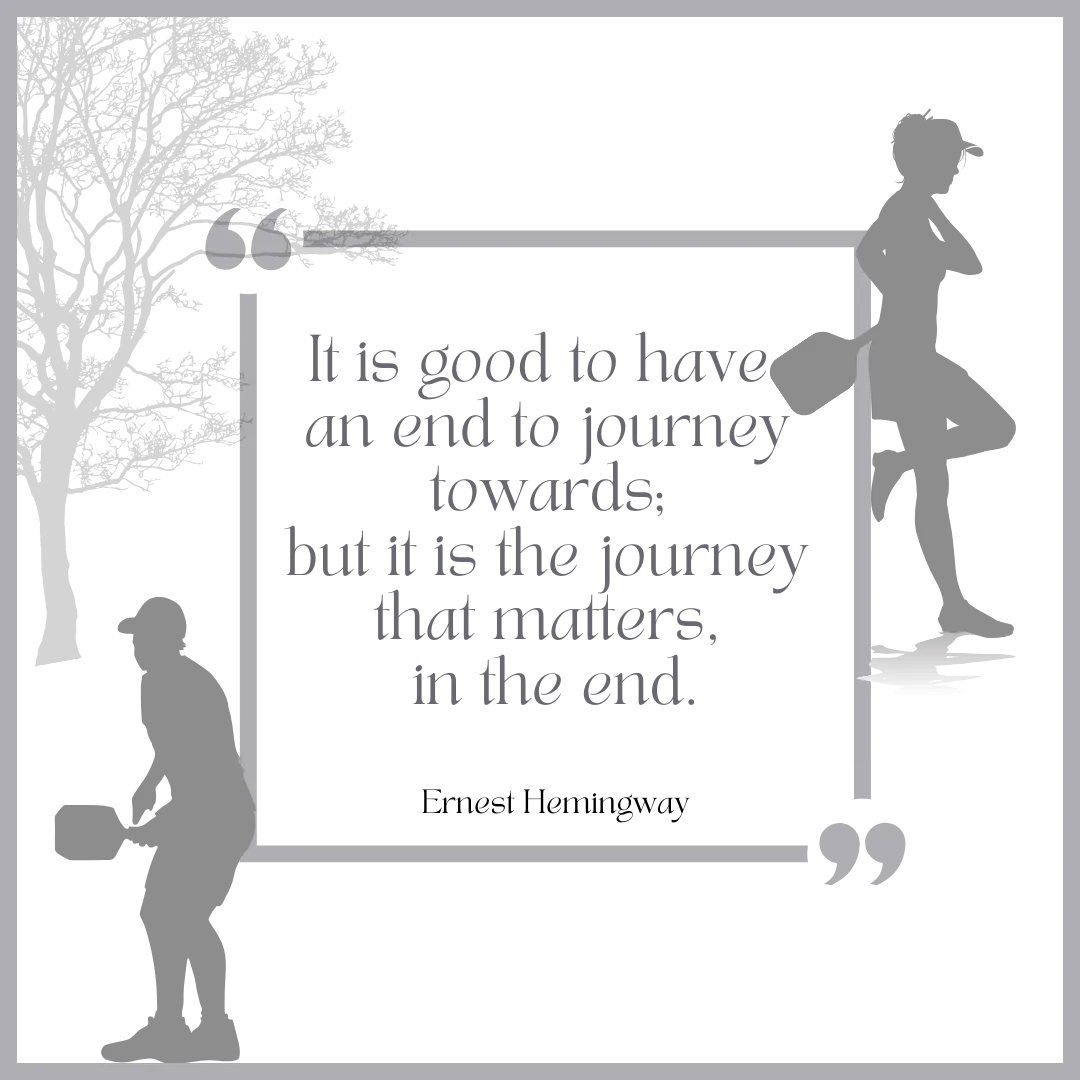 Ernest Hemingway once said, “It is good to have an end to journey towards; but it is the journey that matters, in the end.” While Hemingway wasn’t talking about Pickleball, his words deeply connect with those who love the sport. Pickleball, like life, is an adventure filled with excitement, hurdles, and self-discovery. Playing Pickleball, like any adventure, involves ups and downs, whether you win or lose. The key is to embrace these challenges, learn from your mistakes, and continually strive to be better. Just as a writer perfects their skills through multiple drafts and revisions, a Pickleball player also refines their game with practice, patience, and determination.
Ernest Hemingway once said, “It is good to have an end to journey towards; but it is the journey that matters, in the end.” While Hemingway wasn’t talking about Pickleball, his words deeply connect with those who love the sport. Pickleball, like life, is an adventure filled with excitement, hurdles, and self-discovery. Playing Pickleball, like any adventure, involves ups and downs, whether you win or lose. The key is to embrace these challenges, learn from your mistakes, and continually strive to be better. Just as a writer perfects their skills through multiple drafts and revisions, a Pickleball player also refines their game with practice, patience, and determination.
In this post, we’ll deep dive into Pickleball Drills, which are the building blocks of this journey to ultimately help you become a more skilled and self-assured player. We’ll also provide tailored Pickleball techniques and strategies and explore drills that are designed for single and double players for all skill levels.
Whether you’re returning for more content or just starting, we’ve got you covered. So, grab your paddle, find a partner, or clear some court space for yourself. Let’s begin with this journey by becoming skilled at a Pickleball drill we’ve selected for you.
Pickleball drills play a huge role in your Pickleball journey. They provide structure, focus, and means to track your progress. These routines are carefully designed to work on specific aspects of the game such as your Serve, Volley, position, and footwork. Breaking the game into smaller, manageable parts with drills allows you to focus on improving specific skills, ultimately boosting your overall performance.
Furthermore, Pickleball drills offer a chance for self-discovery. By using drills, it can help you identify areas in need of improvement. These will allow you to focus specifically on target requirements and, therefore, will enhance your performance.
1. Dink and Drop Drill – To begin with, position yourself on one side of the net. Then, gently hit the ball to your partner, who in turn, will return it to you. Continue with this process, until you can maintain a steady and controlled exchange. As a result, this will help you enhance your control and skill.
2. Serve and Return Drill – You can engage in this drill either alone or with a partner. Serve from both the right and left sides of the court while your partner receives the serve. 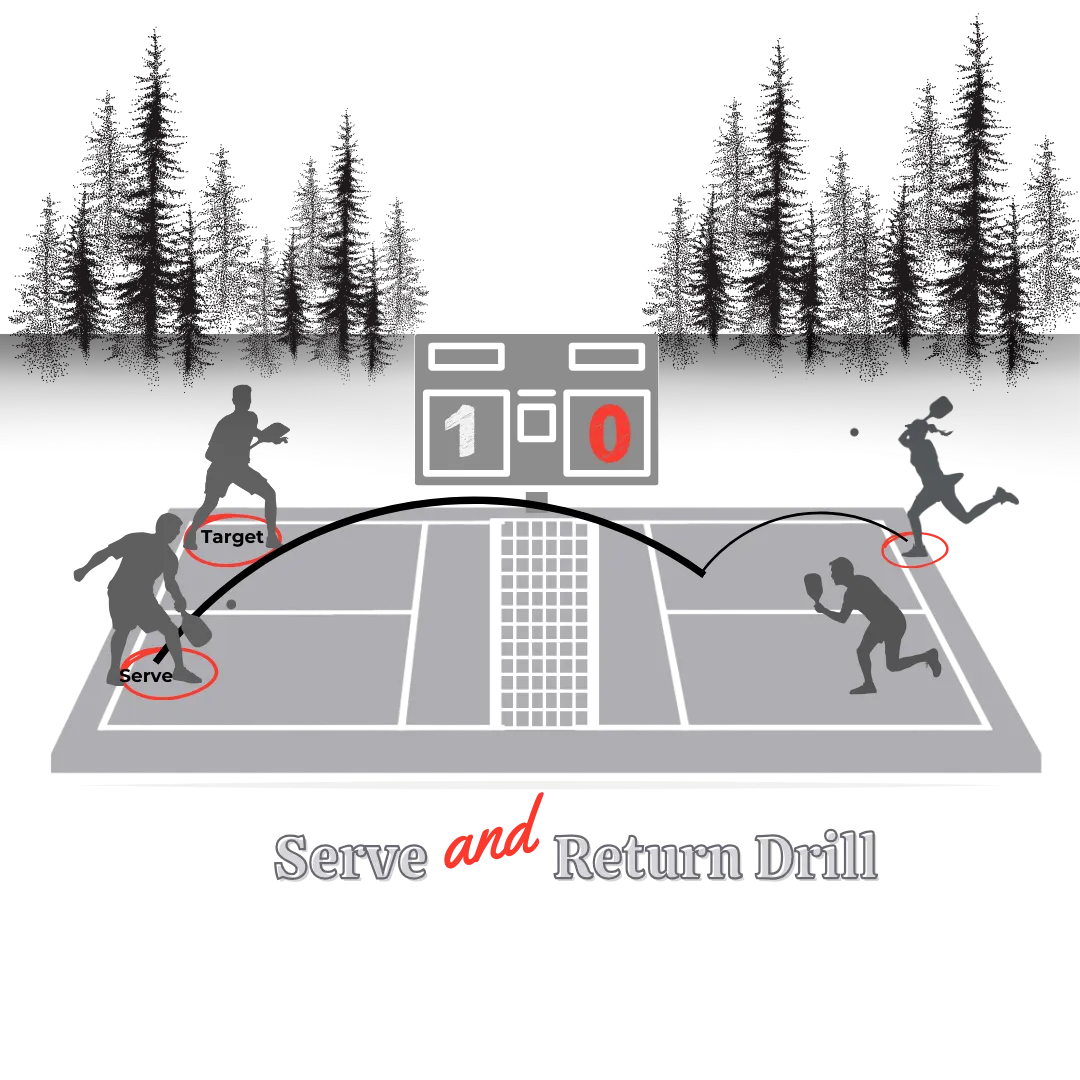 Throughout this practice, pay close attention to where you place the ball and how consistently you do it. This Pickleball drill technique will improve your serving and return skills.
Throughout this practice, pay close attention to where you place the ball and how consistently you do it. This Pickleball drill technique will improve your serving and return skills.
Once you’ve mastered this serve, switch to hitting the ball toward your opponent’s backhand. Make sure to target the back of the court. Since most Pickleball players are right-handed, it’s equally important to focus on practicing hitting the ball to their right side.
3. Third Shot Drop Drill – In Pickleball, hitting the third shot is critical to your success. To improve your team’s play, execute a soft controlled shot following the serve and return. This drill is the most important shot in a Pickleball game. Additionally, focus on refining your ball placement and spin techniques to keep your opponents on their toes—besides, a well-executed third-shot drop positions you perfectly for a dinking rally.
This shot can be likened to a long dink, and the key is to control the power of your shot. It all boils down to muscle memory, which is your body’s way of recalling specific actions and repeating them effortlessly.
This drill in Pickleball teaches players to enhance their position and quick responses at the net. It’s commonly used to practice readiness during fast exchanges near the Non-Volley Zone to refine game control. This is also the easiest drill for Pickleball beginners.
Just hit the ball up in the air, and then maintain the bounce on your paddle without letting it hit the ground. Experiment with how high it bounces while you move around.
5. Selfie-Ball Bounce – This is an excellent solo drill that you can do just about anywhere. Firstly, position your paddle horizontally to the ground. Next, bounce the ball off the paddle, and then let it rebound off the ground. Continuously repeat this sequence, all while keeping your knees slightly bent and maintaining a forward-facing posture.
While it’s perfectly fine to shift your feet, strive to keep them fixed, if you’re looking to up the challenge. Make sure to aim for precise control when striking the ball. Your posture should always remain intact so that the ball remains easily within reach of your paddle.
Try adding a side-step while bouncing to make this drill more interesting. This, in turn, will make your practice routine a bit more challenging.
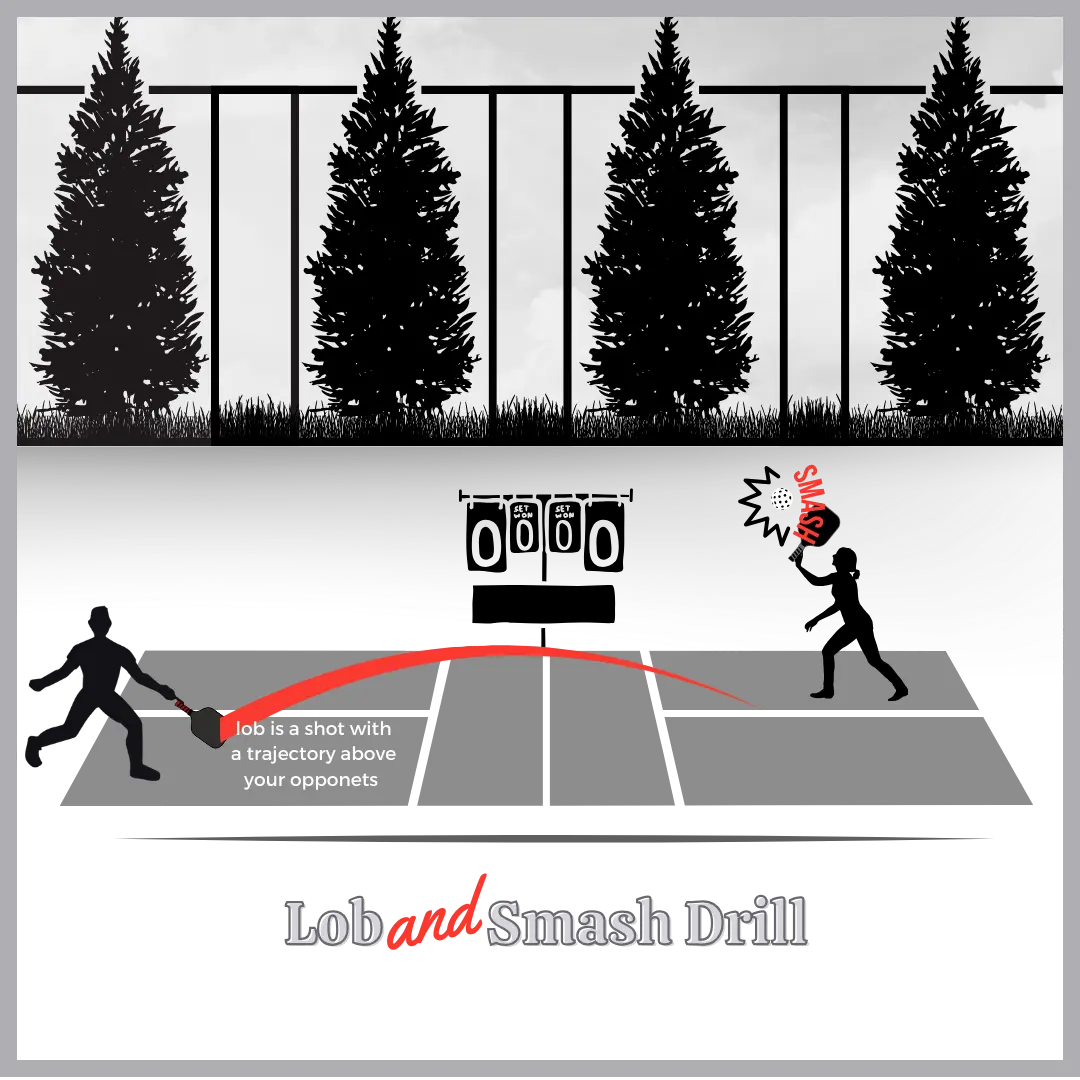 1. Sideline Drives – In Pickleball, players use the sideline drive drill as a practice exercise. In this drill, players aim to hit their shots along the court’s outer border. This practice is helpful for improved shot accuracy, particularly when players aim for the sideline.
1. Sideline Drives – In Pickleball, players use the sideline drive drill as a practice exercise. In this drill, players aim to hit their shots along the court’s outer border. This practice is helpful for improved shot accuracy, particularly when players aim for the sideline.
In addition, both beginners and experienced players benefit from sideline drive drills. These drills help players improve their shot placement and control, which leads to increased effectiveness on the court.
2. Lob and Smash Drill – In Pickleball, the lob and smash drill serves as a training exercise that allows players to improve their skills. This exercise specifically focuses on practicing lobs and smashes, both of which are important shots in the game.
Through consistent practice of the Lob and Smash Drill, players can develop greater adaptability and skill. Consequently, they are better equipped to confidently handle various shot types and situations encountered in Pickleball matches.
Many Pickleball players often fall into the trap of being predictable with their dink shots by always dropping the ball in the same place. This drill helps you improve your dinking skills and keeps your opponents guessing. It is excellent in improving your backhand and forehand shots and is also a lot of fun.
In the Pickleball triangle dinking drills, you and your opponent each place markers in a triangle shape. As you exchange dink shots, make sure to aim for each marker one by one. Start with the left marker, move to the middle one, and then target the right marker, and repeat this process.
4. Defensive Dinking Drill – In this drill, players focus on being consistent and precise rather than trying to hit the ball hard. The goal is to return the ball accurately and make it tough for the opponent to attack. It involves slow rallies to practice patience, improve the player’s touch, and handle pressure when their opponents try to create opportunities.
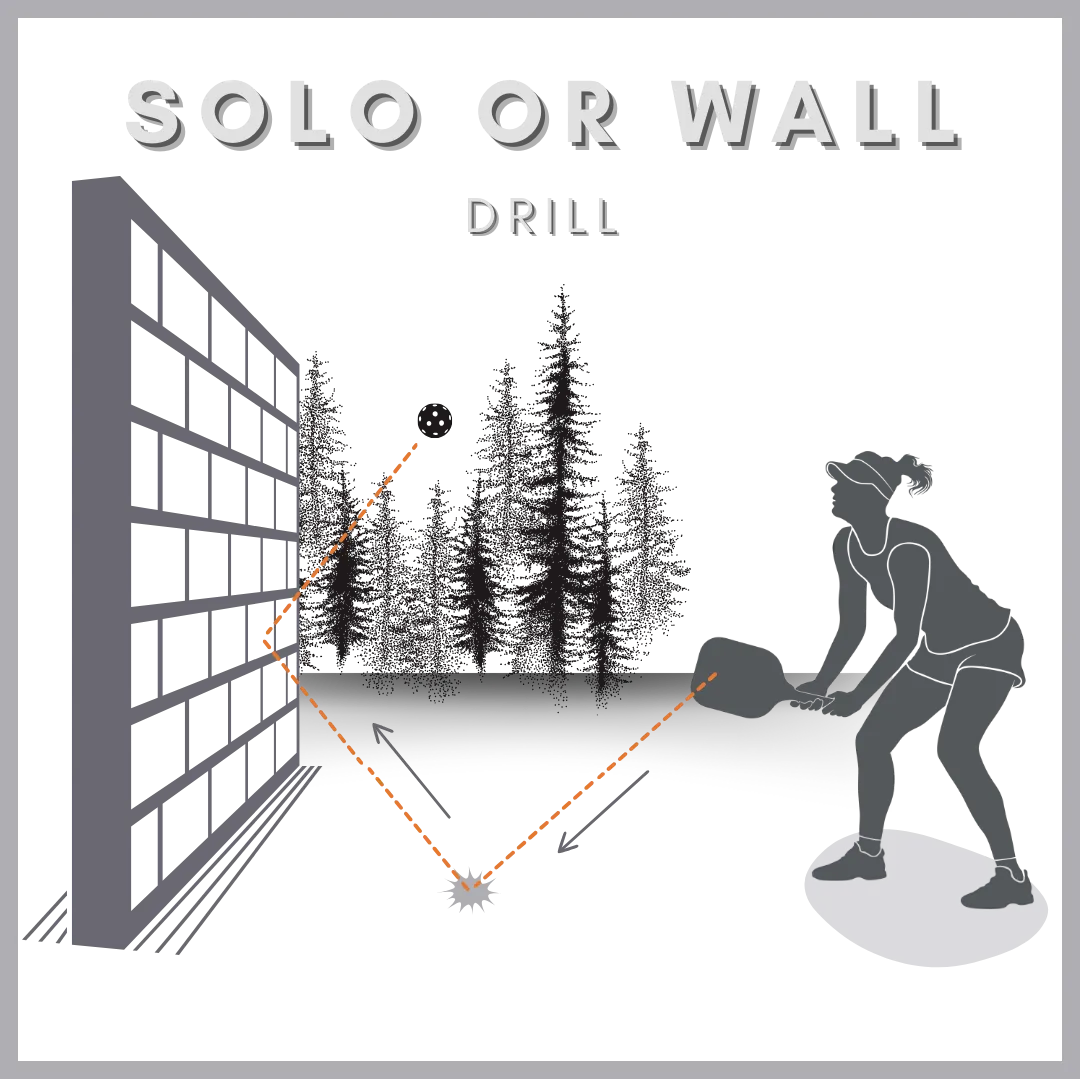 1. Solo or Wall Drills – Performing wall drills is an effective way to enhance your Pickleball skills. Even experienced players understand that consistent practice is the key to improving your game. Part of the beauty of wall drills lies in their solo-friendly nature.
1. Solo or Wall Drills – Performing wall drills is an effective way to enhance your Pickleball skills. Even experienced players understand that consistent practice is the key to improving your game. Part of the beauty of wall drills lies in their solo-friendly nature.
When practicing by yourself, you can also improve your skills by hitting the ball against a wall or making use of a ball machine. You can consistently include this drill in your routine to significantly sharpen your reaction time. This is an excellent method for refining your serve, groundstrokes, and volleys, especially when you can’t find a partner.
2. Footwork Drills – In Pickleball, excellent footwork is vital because it allows players to swiftly reach the right spot for a return volley. Players engage in footwork drills to enhance their positioning and movement. In addition, it helps them prepare for shots and maintain their balance and control during rallies.
In Pickleball, the term “tip-to-grip” refers to the way you hold your paddle while playing. The “tip-to-grip” drill is commonly referred to as the paddle bump. This serves as an excellent method to become familiar with your paddle and understand how the ball interacts with it.
It’s essential to hold the paddle correctly, as it directly impacts your ability to maintain control and achieve accuracy in your shots. Learning this grip technique can significantly enhance your performance on the court. This drill is typically one of the first drills introduced during beginner lessons.
To practice this type of grip, hold your Pickleball paddle flat to the ground. Next, with a gentle motion, bounce the ball on the face of your paddle. Keep gently bouncing the ball to maintain control. Finally, once you’ve got a good sense of the rhythm, flip your paddle from top to bottom to change which sides to connect with the ball. Once you’ve mastered this step, try to gently bounce the ball from the top of the paddle facing down to the bottom.
Doing this drill will not only help you understand the paddle’s sweet spot better and get to know the less bouncy spots, typically found around the edges and base of the paddle, but you’ll also experience the health benefits it offers.
In Pickleball, target practice allows players to purposefully direct their shots toward specific areas on the court. It helps players refine their accuracy, control, and shot placement during games. Target practice is a key part of Pickleball training.
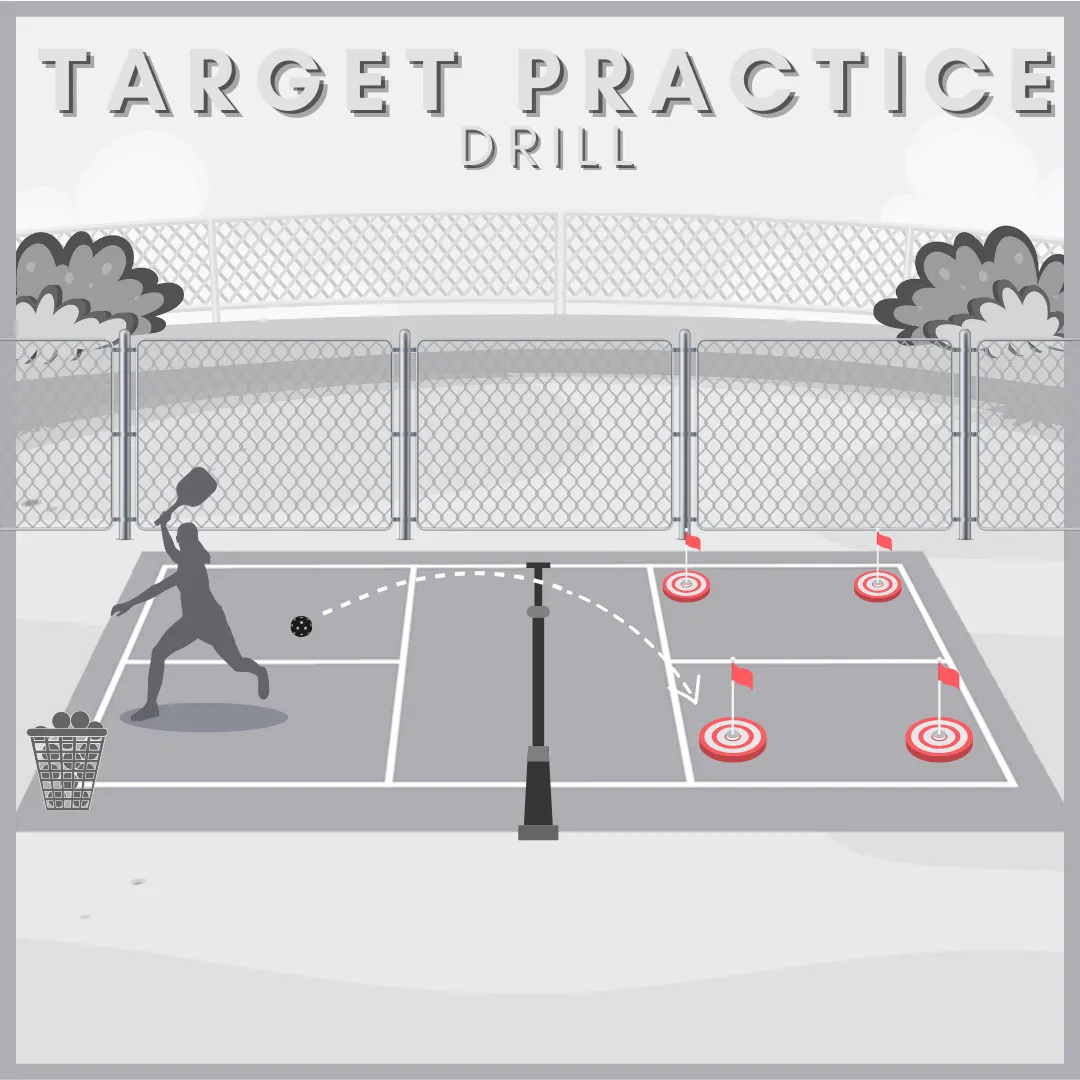 Target practice can be done during solo practice or with a partner. Players can enhance their training by placing cones or markers on the court as clear objectives. As players improve their accuracy, they can make this drill even more challenging by aiming at smaller, more precise spots.
Target practice can be done during solo practice or with a partner. Players can enhance their training by placing cones or markers on the court as clear objectives. As players improve their accuracy, they can make this drill even more challenging by aiming at smaller, more precise spots.
Consistent target practice can significantly improve a player’s skill in managing the ball while making strategic shots during actual games. As a result, this can lead to improved performance and increased success on the court.
5. Cross-Court Dinks Drill – In Pickleball, players use a cross-court dink drill to practice and improve their control, touch, and skill near the net. Dinking is equally important in the game because it means hitting soft, low shots over the net from the Non-Volley Zone area.
This drill is beneficial for practicing various shots, including volleys and groundstrokes. Unlike other drills, this cross-court dink drill focuses particularly on improving your dink shot. Therefore, you don’t have to think about serving, returning serves, or doing third-shot drops.
The aim is to engage in strategic exchanges with the opponents near the net but the goal is to create opportunities for winning shots. In essence, this drill not only will help players develop their patience, control, and consistency while engaged in net exchange but also boost their skills to analyze their opponent’s shot. Regular practice of this drill can significantly improve a player’s dinking skills to make them more effective during actual gameplay.
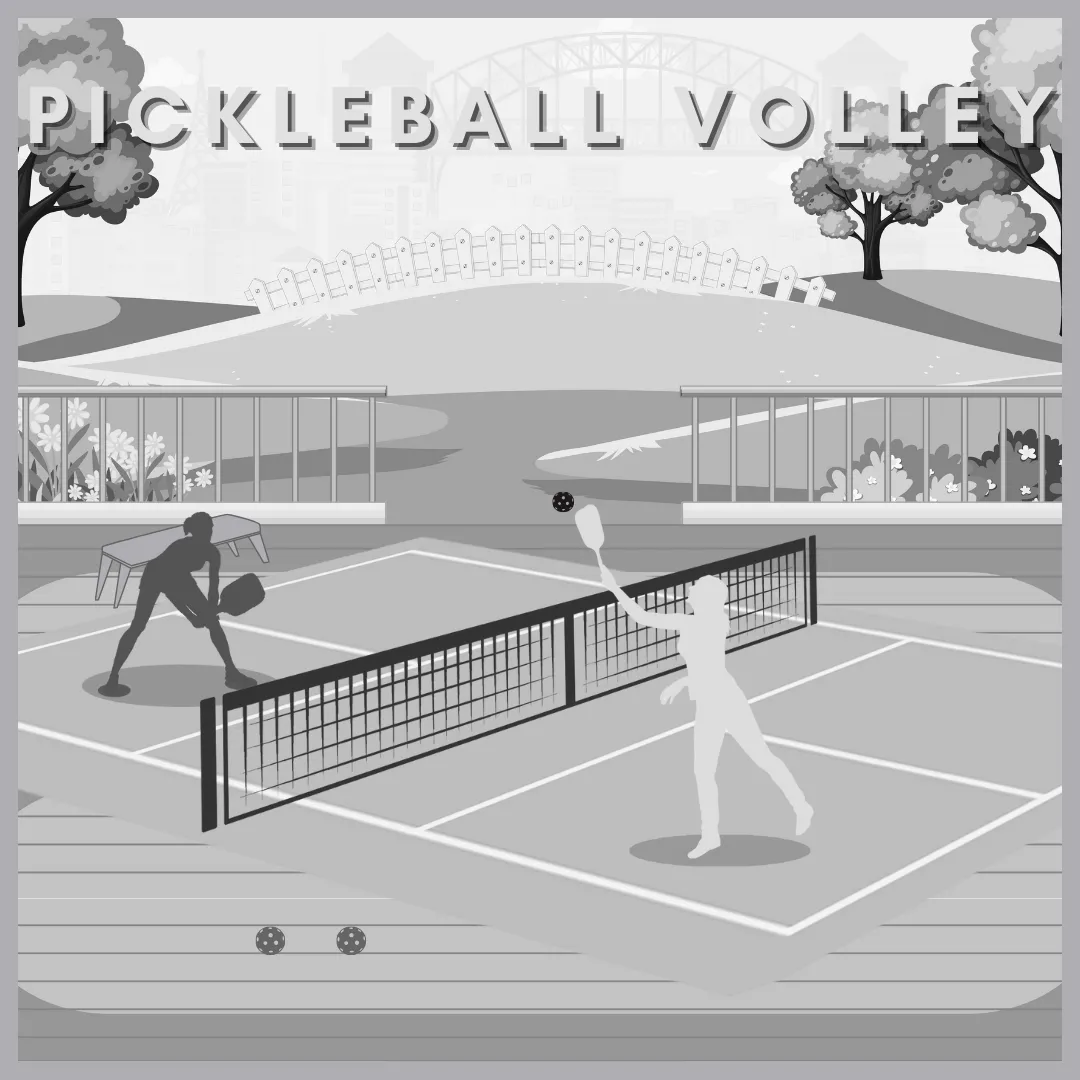 1. Pickleball Volley – A Pickleball volley drill is a key practice routine that focuses on improving a player’s ability to make effective mid-air shots, known as volleys. In Pickleball, a volley is when you strike the ball before it touches your side of the net.
1. Pickleball Volley – A Pickleball volley drill is a key practice routine that focuses on improving a player’s ability to make effective mid-air shots, known as volleys. In Pickleball, a volley is when you strike the ball before it touches your side of the net.
This drill is sometimes called a “volley battle.” During this exercise, players hit volleys back and forth over the net without letting the ball touch the ground. It is also an indispensable component of the game. To mix things up and add more challenges, you and your partner can take turns hitting the ball to the right and left.
Despite its apparent simplicity, this routine effectively tests your volleying skills and contributes to an overall improvement in your gameplay. This significance becomes particularly apparent during rapid exchanges at the Non-Volley Zone.
In Pickleball, the half-court dinking drill is a training routine that helps improve your dinking abilities. What’s more, these skills are essential to maintain control and set up offensive shots in a Pickleball game. Dinking involves gentle and precise shots near the net, typically in the Non-Volley Zone or ‘The Kitchen.”
This drill is ideal for players who want to boost their net game and excel in dink exchanges near the kitchen line. As you master this drill, you’ll not only be better prepared but also more confident in actual games where dinking plays a huge role.
In this drill, Player A is on one side of the net, while Player B is on the opposite side. Both specifically stand close to the Non-Volley line. The drill starts when Player A gently sends the ball over the net to Player B. You can also choose to include four Pickleball players on one court, with two players on each side of the net as they hit the ball straight across the court.
Keep in mind that dinking involves getting the ball over the net to land in the Non-Volley Zone. Focus on hitting gentle, controlled shots. Even if the ball goes beyond the sideline, baseline, or centerline of half of the court, it’s considered out. Likewise, identical rules apply when aiming at the Non-Volley Zone.
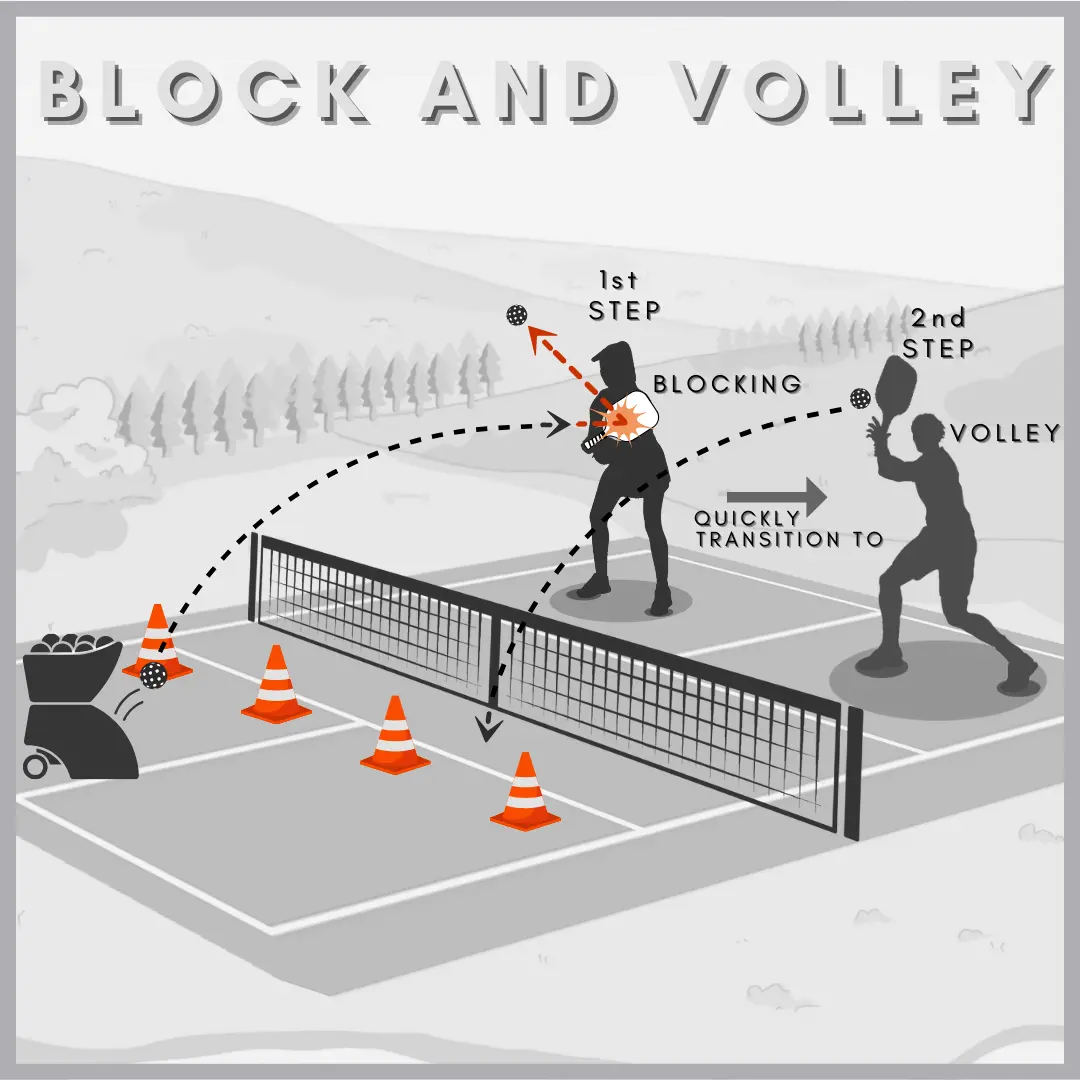 Position yourself on opposite sides of the net and rally back and forth using forehand and backhand groundstrokes. Next, maintain a steady rhythm, control, and placement rather than power. Finally, hit the ball cross-court and along the sidelines while practicing different angles and heights.
Position yourself on opposite sides of the net and rally back and forth using forehand and backhand groundstrokes. Next, maintain a steady rhythm, control, and placement rather than power. Finally, hit the ball cross-court and along the sidelines while practicing different angles and heights.
4. Block and Volley Drill – In Pickleball, a “block and volley drill” is a training exercise to improve your skills and ball control at the net. It specifically focuses on two crucial aspects of the game: blocking, which is a defensive move, and volleying which is an offensive technique.
This drill helps you get better at your net game, control, and reaction time, which are important skills in Pickleball. It sharpens your ability to handle soft shots near the net, a crucial skill in competitive play, especially in the kitchen area where volleying is restricted.
As the ball approaches the net, raise your paddle. Allow the ball to make contact with your paddle without applying any force. In turn, it will bounce off your paddle and effortlessly cross the net. In the same way, your partner should execute the same action, while gently blocking the ball with their paddle. This highly effective technique is particularly useful for handling any incoming ball with momentum while you’re positioned near the Non-Volley Zone.
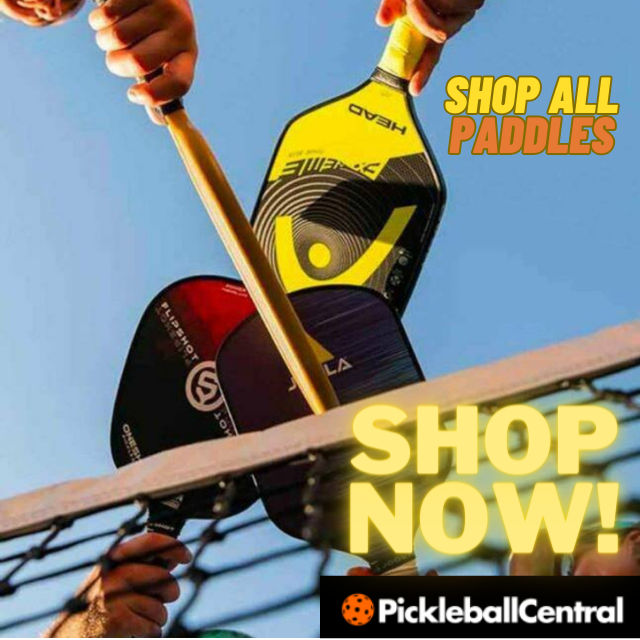 The back-and-forth drill helps Pickleball players improve their basic skills and become more consistent in their shots.
The back-and-forth drill helps Pickleball players improve their basic skills and become more consistent in their shots.
To start this drill, both players initially start at the kitchen line. The first player gently strikes the ball over the net, and the other player returns it. Then, the receiver steps back, while the net player aims for a deeper shot. This continues, with the receiver moving back with each hit until reaching the baseline and performing a third shot drop.
Following this, the baseline player moves forward with each shot and then switches roles. The person who previously conducted the drill becomes the receiver, while slowly moving backward with each shot until they reach the baseline. This keeps the back-and-forth practice going smoothly.
 Overall, improving in Pickleball requires consistent practice and a commitment to enhance your skills. Therefore, find a partner, head to the court, and put these drills to the test. Whether you’re a beginner or an advanced player, there’s always room for improvement in Pickleball. You can also visit the official USAPA website to watch some clips if you need further info.
Overall, improving in Pickleball requires consistent practice and a commitment to enhance your skills. Therefore, find a partner, head to the court, and put these drills to the test. Whether you’re a beginner or an advanced player, there’s always room for improvement in Pickleball. You can also visit the official USAPA website to watch some clips if you need further info.
Remember that it’s not just about reaching the end goal; it’s about enjoying every moment on the court. Embrace the challenges and grow as a player because the journey itself is the true reward and the same holds true for Pickleball.
Stay tuned for future articles in this series, where we continue to deep dive into the world of Pickleball. The road ahead is filled with excitement and opportunities for self-discovery and we’re thrilled to be with you on this remarkable journey. Until our next installment, keep playing and enjoying the beauty of your progress!

From Beginner to Pro: Ace your Play with our Pickleball Techniques & Strategies to Dominate the Court in your Next Game.
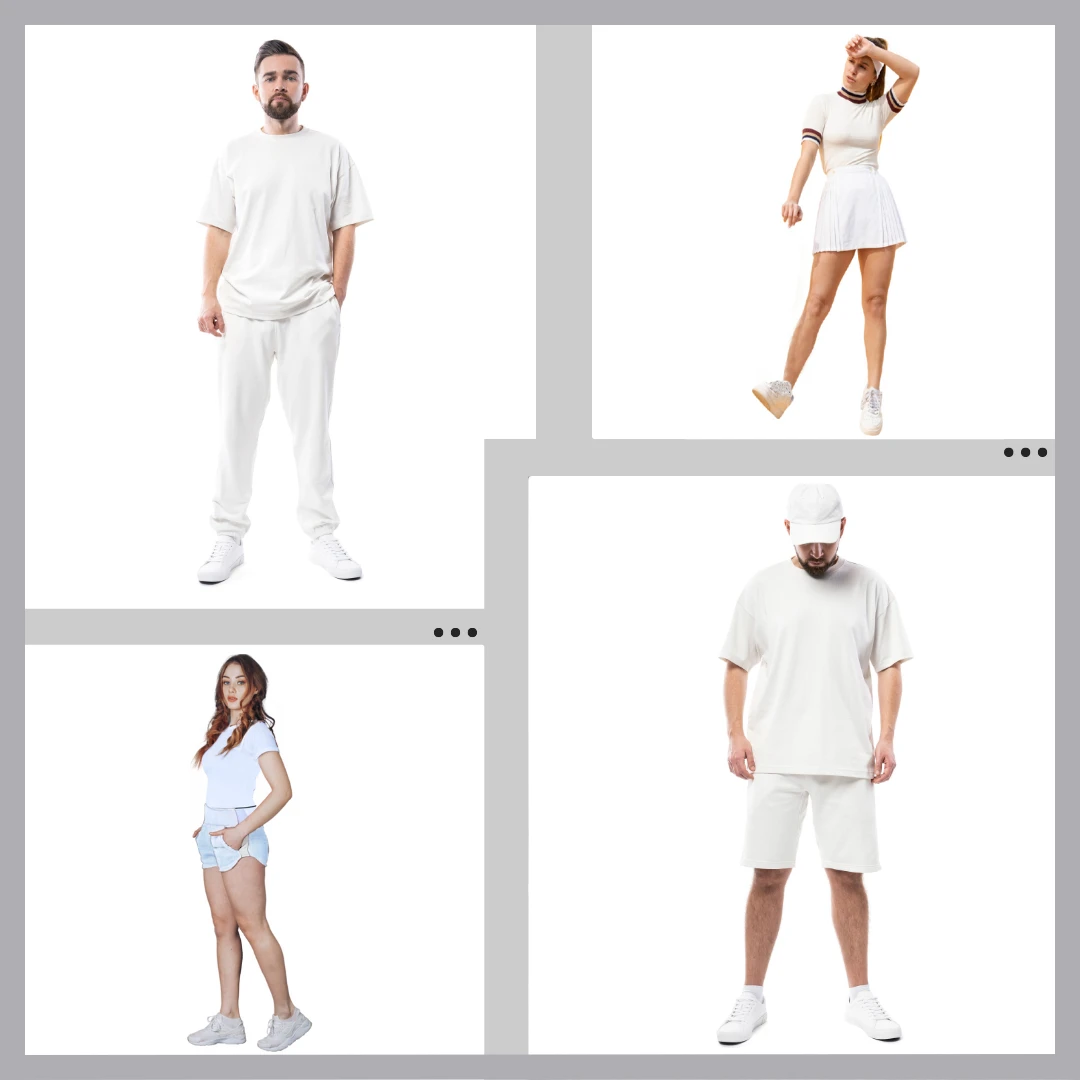
Step into the spotlight, make a lasting impression, and become a trendsetter on the Pickleball court with our Pickleball apparel guide.

Thinking about the perfect gift for someone just starting in Pickleball? Discover our Pickleball gift guide tailored for beginners. Look no further.

Ever wondered how your Pickleball style could reach new heights? Learn the secrets of success with the “Pickleball Accessories To Enhance Your Play and Ace Your Style”.
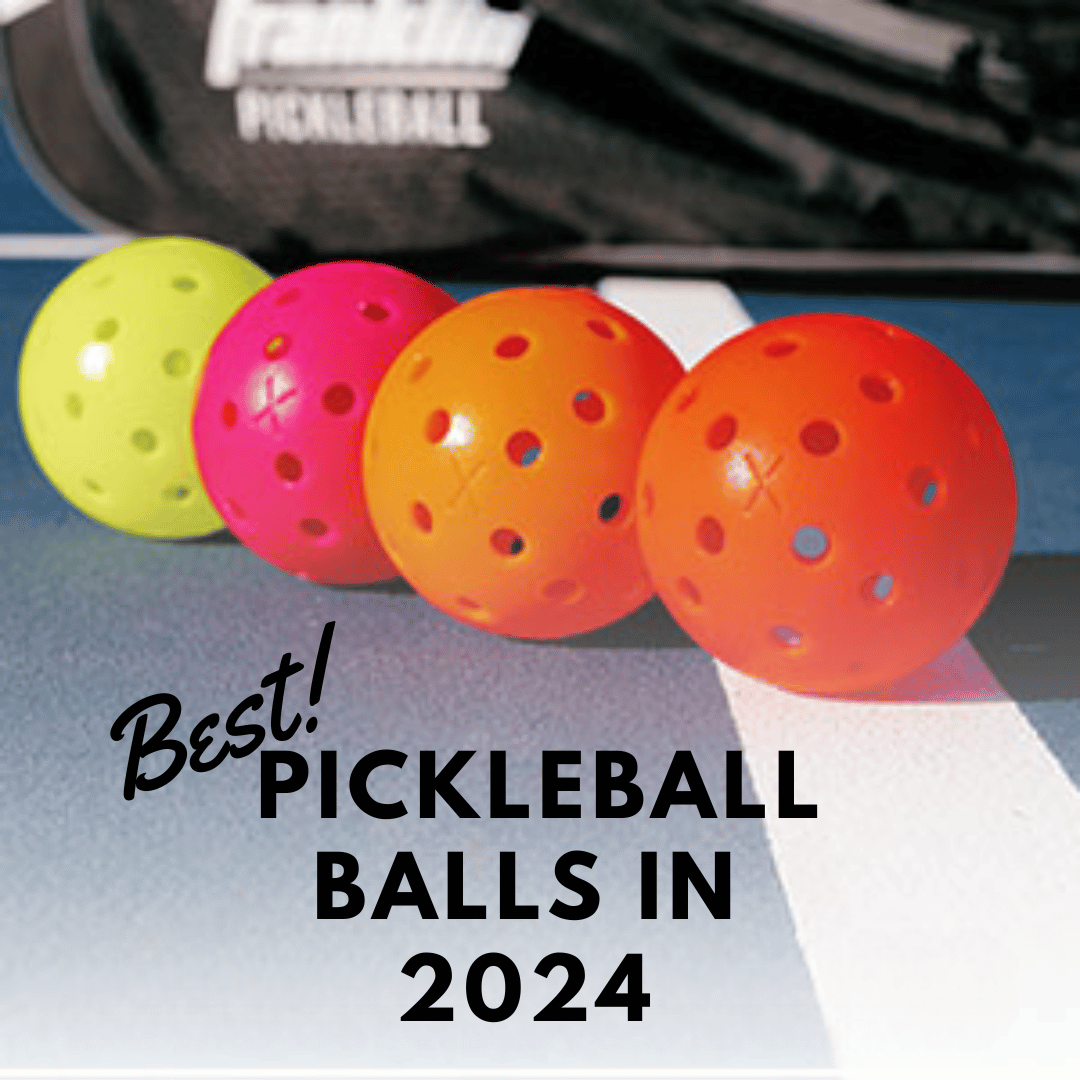
Are you seeking the perfect Pickleball balls for 2024? Let’s find out why they’re the “Best Pickleball balls for 2024”.
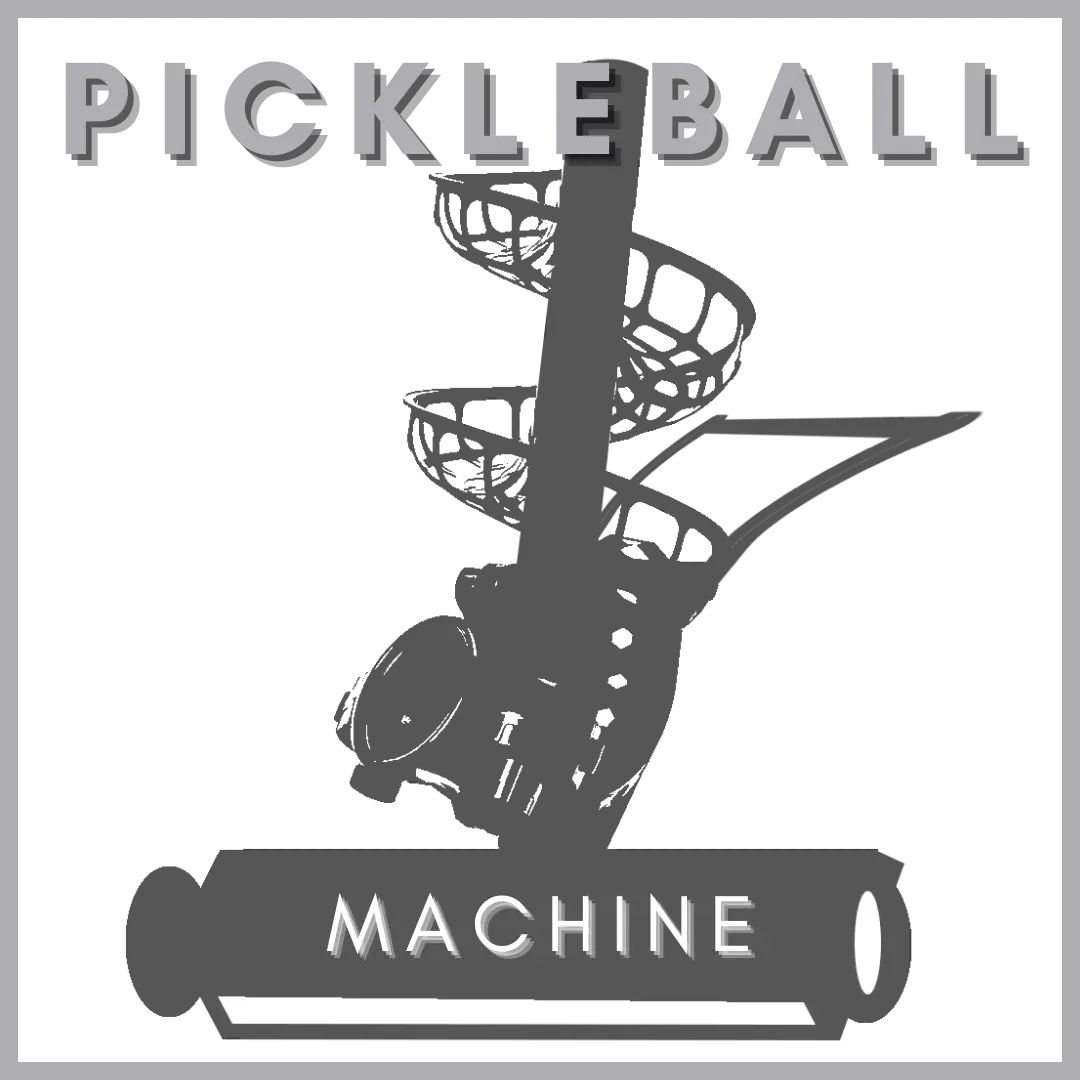
Looking to boost your pickleball skills? How can Pickleball Machines serve as your secret weapon?
If you would like us to feature your brand in our upcoming Pickleball blogs, Collaborate with Us. We’d love to have you featured.